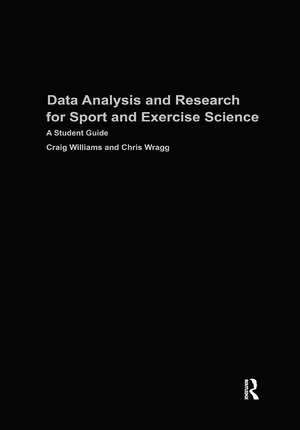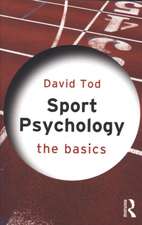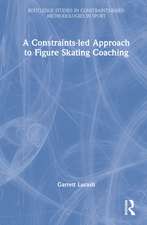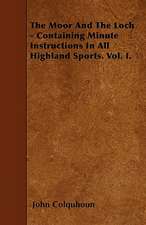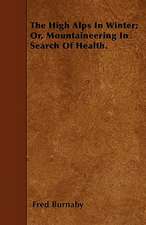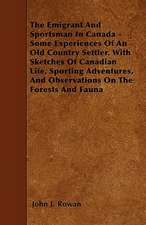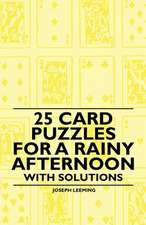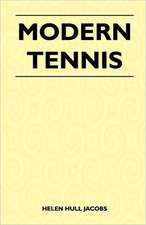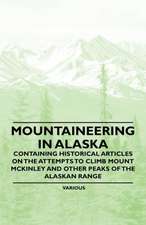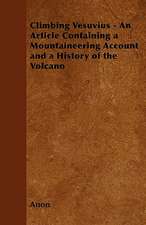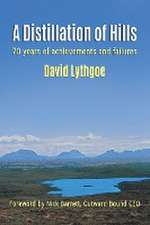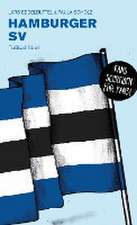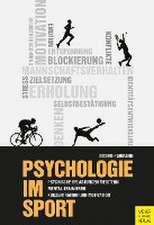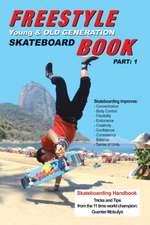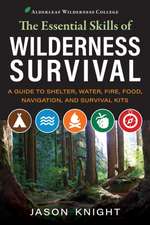Data Analysis and Research for Sport and Exercise Science: A Student Guide
Autor Craig Williams, Chris Wraggen Limba Engleză Hardback – 18 dec 2003
The text is divided into three main areas: Research and Design, Data Analysis and the Interpretation of Findings. Topics covered in the book include:
* introduction to the scientific research method
* the literature review
* developing your research question and experimental design
* using statistical analysis to interpret results
* presentation of your data
* discussing your results and drawing conclusions.
Both authors have supervised many student dissertations and have an excellent understanding of the concerns and pitfalls facing those new to this field.
| Toate formatele și edițiile | Preț | Express |
|---|---|---|
| Paperback (1) | 421.13 lei 6-8 săpt. | |
| Taylor & Francis – 11 dec 2003 | 421.13 lei 6-8 săpt. | |
| Hardback (1) | 1273.35 lei 6-8 săpt. | |
| Taylor & Francis – 18 dec 2003 | 1273.35 lei 6-8 săpt. |
Preț: 1273.35 lei
Preț vechi: 1552.87 lei
-18% Nou
Puncte Express: 1910
Preț estimativ în valută:
243.65€ • 254.39$ • 201.66£
243.65€ • 254.39$ • 201.66£
Carte tipărită la comandă
Livrare economică 04-18 aprilie
Preluare comenzi: 021 569.72.76
Specificații
ISBN-13: 9780415289702
ISBN-10: 041528970X
Pagini: 152
Dimensiuni: 178 x 254 x 10 mm
Greutate: 0.48 kg
Ediția:Revised
Editura: Taylor & Francis
Colecția Routledge
Locul publicării:Oxford, United Kingdom
ISBN-10: 041528970X
Pagini: 152
Dimensiuni: 178 x 254 x 10 mm
Greutate: 0.48 kg
Ediția:Revised
Editura: Taylor & Francis
Colecția Routledge
Locul publicării:Oxford, United Kingdom
Public țintă
Postgraduate and UndergraduateCuprins
1. Learning outcomes 1.1 Introduction 1.2 The history of science 1.2.1 Logic and deductive reasoning 1.2.2 Inductivism 1.2.3 Reductionism 1.2.4 Hypothesis testing 1.3 Summery and criticism of the scientific method 1.4 The foundations and development of exercise and sport sciences, Summary 2. Learning outcomes 2.1 Introduction 2.2 Why is a literature review so important? 2.2.1 The purpose of a review of literature 2.2.2 Planning and preparation 2.2.3 Define the research area 2.2.4 State the specific purpose of the search 2.2.5 Select database(s) and descriptors 2.2.6 Plan 2.2.7 Conduct 2.3 How to write the review, Common problems faced by students, Common mistakes, Summary 3. Learning outcomes 3.1 Introduction 3.1.1 Common mistakes 3.1.2 The research question and experimental design 3.2 Validity 3.3 Internal validity 3.3.1 Threats to internal validity 3.4 External validity 3.5 Validity of measurement 3.5.1 Logical validity 3.5.2 Criterion validity 3.5.3 Construct validity 3.5.4 Ecological validity 3.6 Reliability 3.6.1 Sources of variability 3.6.1.1 Technician error 3.6.1.2 Equipment error 3.6.1.3 Learning effect 3.6.1.4 Biological variance 3.6.2 Terminology 3.6.2.1 Reproducibility 3.6.2.3 Constancy 3.7 Types of experimental design 3.7.1 Single subject study 3.7.2 Longitudinal study 3.7.3 True experimental 3.7.4 Quasi-experimental 3.7.5 Causal-comparative 3.7.6 Correlational 3.8 Selecting the appropriate experimental design, Summary 4. Learning outcomes 4.1 Introduction 4.2 Different types of averages; a quick reminder 4.3 Normal distribution 4.3.1 Skewness 4.3.2 Multimodal data 4.3.3 Variance 4.4 Measures of variance 4.4.1 Range 4.4.2 Standard deviation 4.4.3 Coefficient of variation 4.5 Standard Deviation and the normal distribution, Summary 5. Learning outcomes 5.1 Introduction 5.2 Type I and Type II Errors 5.3 Statistical power 5.4 One-tailed and Two-tailed tests of difference 5.5 Measuring differences between independent samples 5.5.1 Independent samples t tests 5.5.2 Dependent samples (repeated measures) t tests 5.6 Testing differences between more than two samples 5.6.1 Simple one way analysis of variance (ANOVA) 5.6.2 One way repeated measures analysis of variance (ANOVA) 5.7 Post hoc testing 5.8 Factorial analysis of variance 5.9 Common mistakes, Summary 6. Learning outcomes 6.1 Introduction 6.2 Scatter plots 6.3 Correlations 6.3.1 Sample size and statistical significance 6.3.2 Size of a correlation coefficient 6.3.3 Understanding correlations 6.4 Bivariate regression 6.5 Multiple regression 6.6 Common mistakes, Summary 7. Learning outcomes 7.1 Introduction 7.2 Ordinal scales 7.3 Non-parametric statistical tests 7.3.1 Tests of difference for independent samples 7.3.2 Tests of difference for dependent samples (repeated measures) 7.3.3 Relationship testing 7.4 Chi-squares 7.5 Common mistakes, Summary 8. Learning outcomes 8.1 Introduction 8.2 Guidelines for text 8.3 Guidelines for tables 8.4 Guidelines for figures 8.5 Presentations 8.5.1 Oral presentations 8.5.2 Poster presentations 8.7 Common mistakes, Summary 9. Learning outcomes 9.1 Introduction 9.2 Generic information related to the interpretation of data 9.3 Difference testing 9.3.1 Interpreting effects 9.3.2 How significant is significant? 9.3.3 Practical versus statistical significance 9.3.4 Summary 9.4 Correlation studies 9.4.1 Cause and effect? 9.4.2 The size of the correlation 9.4.3 The range of the data 9.4.4 Statistical versus practical significance 9.4.5 Common mistakes 9.5 Regression analyses 9.5.1 Prediction or cause and effect? 9.5.2 The prediction model 9.5.3 Summary 10. Learning outcomes 10.1 Introduction 10.2 Discussion and conclusion 10.2.1 Key points 10.3 Reasoning and conclusions 10.3.1 Multiple reasons and intermediate conclusions 10.4 Common mistakes, Summary
Notă biografică
Craig Williams is programme director and senior lecturer in sport and exercise science at the University of Exeter. Chris Wragg is a lecturer in sport and exercise science at the University of Brighton.
Recenzii
'Overall, this is a textbook that students will find both readable and interesting...the text is well written, and accessible to students beginning their research careers.'
'This will be a valuable resource for sport and exercise science students.' -both Ian Jones in European Physical Education Review, Volume 11, 2005
'This will be a valuable resource for sport and exercise science students.' -both Ian Jones in European Physical Education Review, Volume 11, 2005
Descriere
This text introduces undergraduate students to the process of conducting independent research in sport and exercise physiology, biomechanics and psychology, covering all aspects in a user-friendly style.
